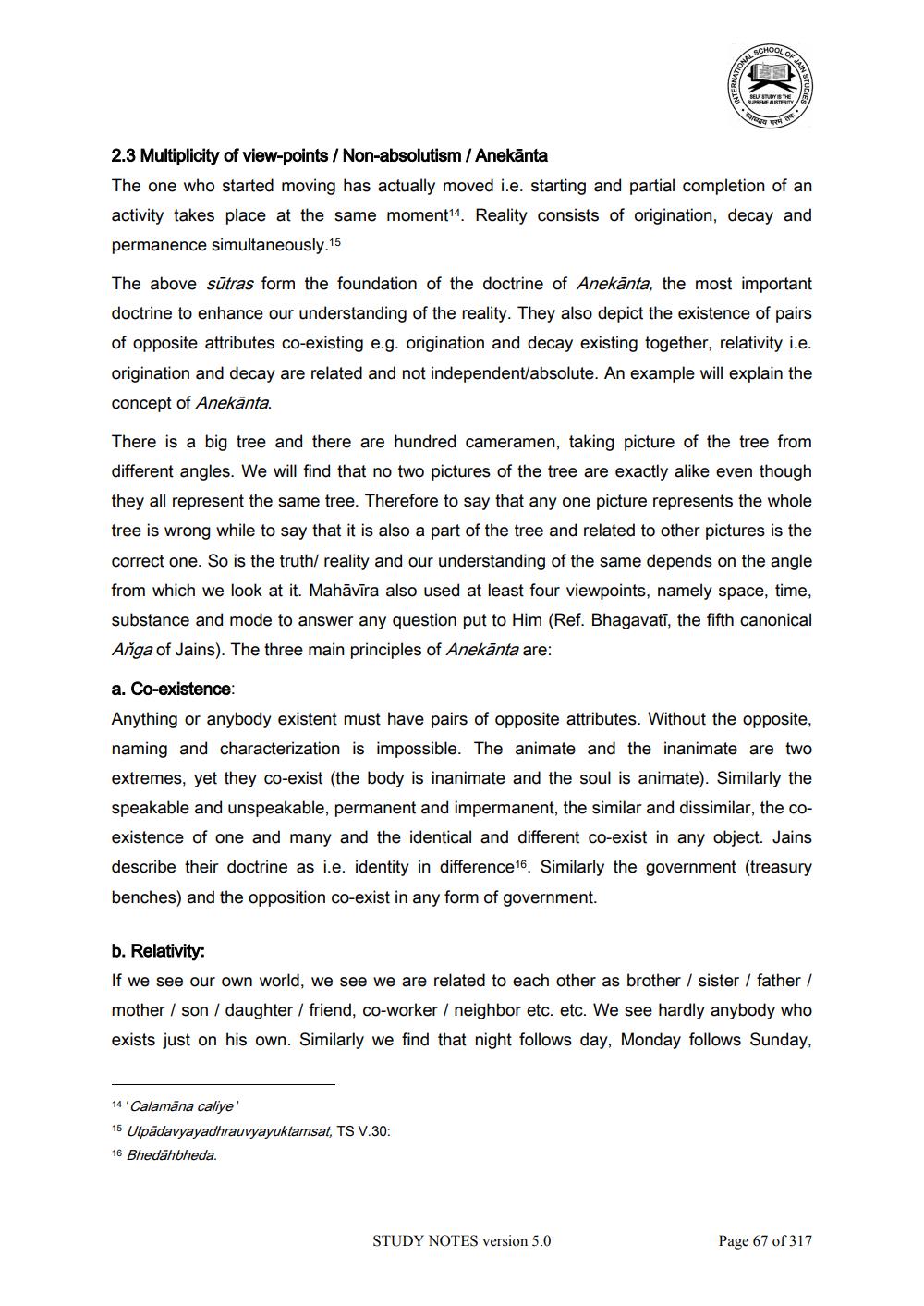________________
2.3 Multiplicity of view-points /Non-absolutism / Anekānta The one who started moving has actually moved i.e. starting and partial completion of an activity takes place at the same moment14. Reality consists of origination, decay and permanence simultaneously.15
The above sūtras form the foundation of the doctrine of Anekānta, the most important doctrine to enhance our understanding of the reality. They also depict the existence of pairs of opposite attributes co-existing e.g. origination and decay existing together, relativity i.e. origination and decay are related and not independent/absolute. An example will explain the concept of Anekānta.
There is a big tree and there are hundred cameramen, taking picture of the tree from different angles. We will find that no two pictures of the tree are exactly alike even though they all represent the same tree. Therefore to say that any one picture represents the whole tree is wrong while to say that it is also a part of the tree and related to other pictures is the correct one. So is the truth/reality and our understanding of the same depends on the angle from which we look at it. Mahāvīra also used at least four viewpoints, namely space, time, substance and mode to answer any question put to Him (Ref. Bhagavatī, the fifth canonical Anga of Jains). The three main principles of Anekānta are:
a. Co-existence: Anything or anybody existent must have pairs of opposite attributes. Without the opposite, naming and characterization is impossible. The animate and the inanimate are two extremes, yet they co-exist (the body is inanimate and the soul is animate). Similarly the speakable and unspeakable, permanent and impermanent, the similar and dissimilar, the coexistence of one and many and the identical and different co-exist in any object. Jains describe their doctrine as i.e. identity in difference16. Similarly the government (treasury benches) and the opposition co-exist in any form of government.
b. Relativity: If we see our own world, we see we are related to each other as brother sister / father / mother / son/daughter / friend, co-worker / neighbor etc. etc. We see hardly anybody who exists just on his own. Similarly we find that night follows day, Monday follows Sunday,
14 Calamāna caliye' 15 Utpadavyayadhrauvyayuktamsat, TS V.30: 16 Bhedāhbheda.
STUDY NOTES version 5.0
Page 67 of 317




